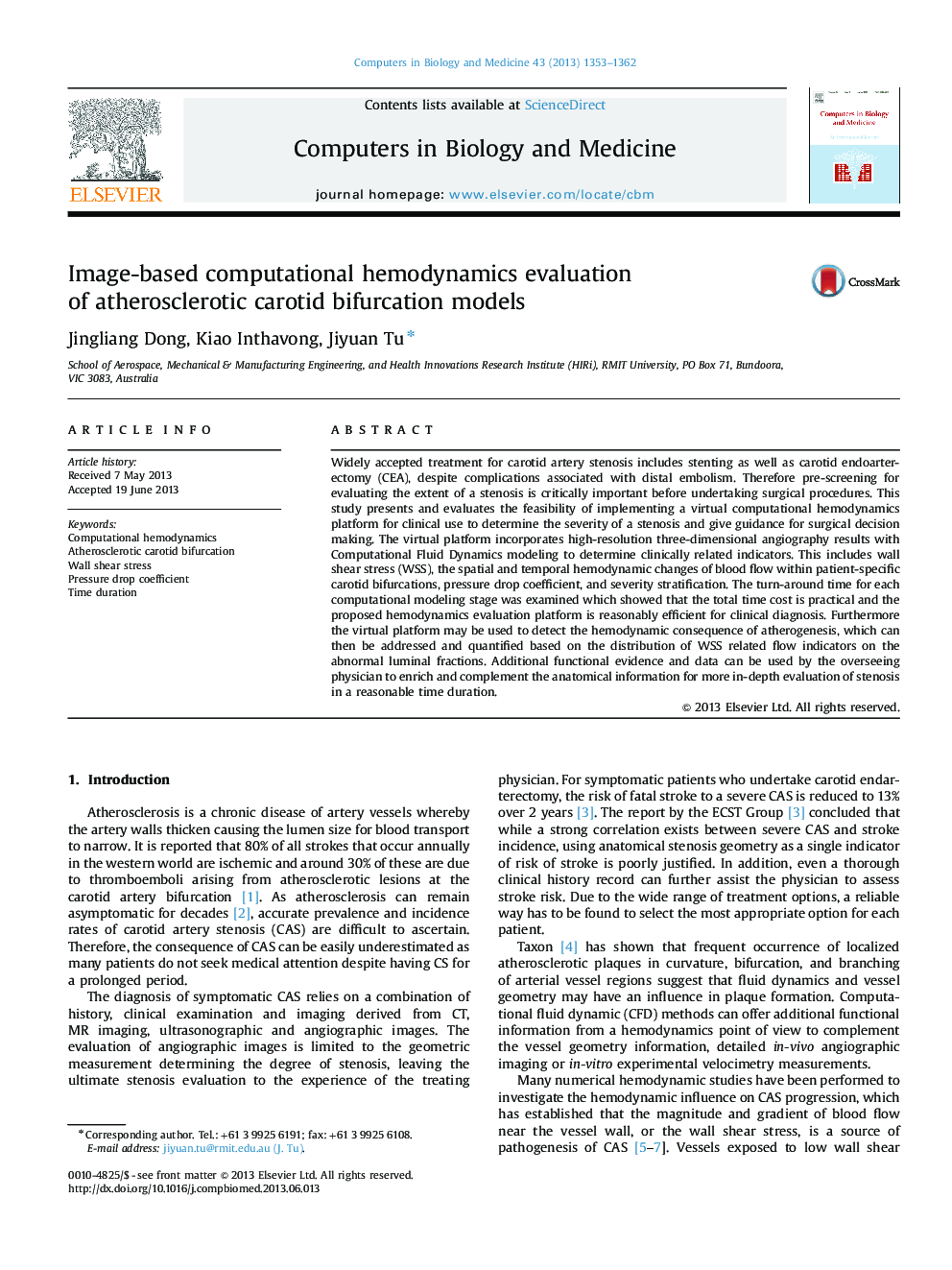| Article ID | Journal | Published Year | Pages | File Type |
|---|---|---|---|---|
| 10351466 | Computers in Biology and Medicine | 2013 | 10 Pages |
Abstract
Widely accepted treatment for carotid artery stenosis includes stenting as well as carotid endoarterectomy (CEA), despite complications associated with distal embolism. Therefore pre-screening for evaluating the extent of a stenosis is critically important before undertaking surgical procedures. This study presents and evaluates the feasibility of implementing a virtual computational hemodynamics platform for clinical use to determine the severity of a stenosis and give guidance for surgical decision making. The virtual platform incorporates high-resolution three-dimensional angiography results with Computational Fluid Dynamics modeling to determine clinically related indicators. This includes wall shear stress (WSS), the spatial and temporal hemodynamic changes of blood flow within patient-specific carotid bifurcations, pressure drop coefficient, and severity stratification. The turn-around time for each computational modeling stage was examined which showed that the total time cost is practical and the proposed hemodynamics evaluation platform is reasonably efficient for clinical diagnosis. Furthermore the virtual platform may be used to detect the hemodynamic consequence of atherogenesis, which can then be addressed and quantified based on the distribution of WSS related flow indicators on the abnormal luminal fractions. Additional functional evidence and data can be used by the overseeing physician to enrich and complement the anatomical information for more in-depth evaluation of stenosis in a reasonable time duration.
Related Topics
Physical Sciences and Engineering
Computer Science
Computer Science Applications
Authors
Jingliang Dong, Kiao Inthavong, Jiyuan Tu,
